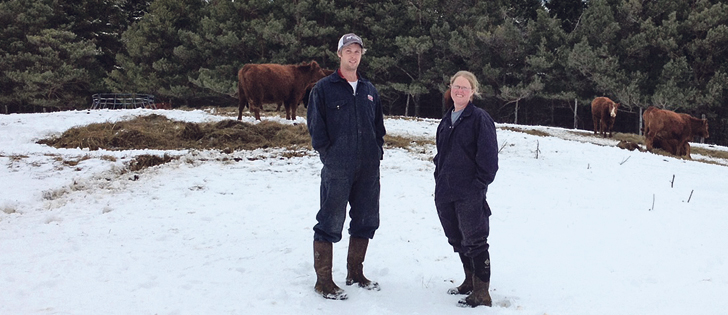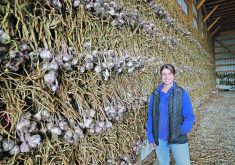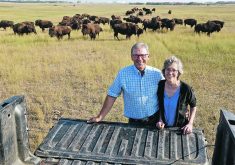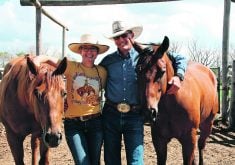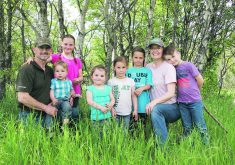When northwestern Ontario comes up in conversation, it’s usually mentioned in a story about an eight-hour, mind numbing drive through rocks, trees and more rocks.
Many Canadians have heard such stories, but few know that there’s more to northwestern Ontario than hunting, fishing, canoeing and driving past rocks.
Hundreds of farmers grow crops and raise livestock from the Manitoba border to North Bay, Ont., including Jason and Trudy Reid, who run a cattle and sheep operation near Thunder Bay, Ont.
For Jason, the region is the undiscovered gem of Canadian agriculture.
Read Also

Nutritious pork packed with vitamins, essential minerals
Recipes for pork
“This, in my opinion, is one of the best places to farm in Canada,” said Jason, cow-calf director with Beef Farmers of Ontario.
“Before any young person buys a farm anywhere in Canada, take two weeks of holidays and travel across northern Ontario.”
The Reids started their operation 14 years ago and now farm about 600 acres of owned and rented land. It’s mostly hayland to feed 50 cows and a herd of sheep.
“It’s a forage program that we run,” Jason said. “We buy in whatever grain we need for finishing our animals…. We background all of our own calves. So we sell yearlings or long yearlings.”
The Reids also run other enterprises to supplement their income, such as trucking livestock and buying and selling hay.
Farming is their main vocation.
“We’re to the point now where we make a full-time living, with the two of us at home farming,” Jason said.
Two decades ago, before he moved to Thunder Bay, Jason knew he wanted to farm but northern Ontario wasn’t part of the plan.
He grew up on a dairy, cattle and sheep farm near Campbellford, Ont., where his dad, uncle and grandfather ran the livestock operation.
“That’s where I was headed, as soon as I could walk. No interest in anything but cows and tractors,” he said.
“I lived and breathed farming. I never had any desire to play sports or do anything.”
In high school, Jason worked on farms around Campbellford and following graduation, he attended Kemptville College near Ottawa. While there he met Trudy, who grew up on a dairy farm near Thunder Bay.
After college, they were determined to run their own farm but their parents were not ready to retire.
In 2003, they considered buying land in Quebec, Ontario and in Manitoba’s Interlake region.
They wound up purchasing a sod farm on the edge of Thunder Bay.
“We ended up here because at least one of us knew some people to (help) get us going,” Trudy said.
Initially, they planned to stay in Thunder Bay for five years to im-prove the land, build up equity and then return to southern Ontario.
That never happened.
“The community help and support — it’s like the rest of Canada was in the 1950s,” Jason said.
“When the neighbour needed help you just did it because that was part of farming.”
When Trudy and Jason started out, established producers around Thunder Bay provided equipment, expertise and time.
“Without our community here… we wouldn’t have existed,” Jason said.
“People lent us a round baler. We had to haul hay… somebody showed up with a tractor.”
There’s also a ‘we’re all in this together’ ethic in the area, which helps farmers sleep soundly at night. Jason doesn’t worry about a neighbour purchasing a piece of land that he wants to buy because farmers in the area believe in co-operation, not competition.
The community spirit is an advantage but there are obstacles to farming in the region.
The nearest agricultural equipment dealer is in northern Wisconsin, a six-hour drive south, or in Steinbach, Man., a seven-hour drive east.
In addition, there isn’t a place to market cattle.
“We don’t have a sale barn (for livestock),” Trudy said. “The closest sale barn is four and a half hours away and they only have five sales a year.”
The Reids have adapted to the marketing reality. They sell calves and yearlings to hobby farmers in the area who want to keep a few animals on their acreage.
They also sell lambs and lamb meat directly to customers in Thunder Bay.
“We sell 75 lambs in a festival weekend in September,” Jason said.
“The local food movement in Thunder Bay is huge.”
If the Reids’ lamb crop is too large for the local market, they ship the animals to processors in Ottawa or Toronto.
Looking forward, Jason and Trudy are hoping to expand their operation to include 100 cows and more ewes.
The opportunity to expand without investing millions is one of the reasons why Jason loves farming in northwestern Ontario and why he promotes the region to young farmers.
Tile-drained cropland near Thunder Bay sells for $4,000 an acre, but most of the farmland in the region is reasonably priced. Forage acres around Thunder Bay are worth $700 to $800 per acre and $500 will buy an acre of forage land near Dryden, Ont.
“There is huge potential on land that is affordable,” he said, adding there’s 1,000 acres of farmland in Dryden that’s sitting idle.
“That’s not bush land. That’s farmland that’s not used anymore…. The under-utilized (farm) land that is available across northern Ontario will just boggle your mind.”
Farming around Thunder Bay
- Thunder Bay has a population of 110,000.
- As of 2011, there were 239 farms in the region.
- Many of those farms are dairies.
- Farm cash receipts from the district in 2013 were $23.7 million, with $13.6 million from dairy production.




